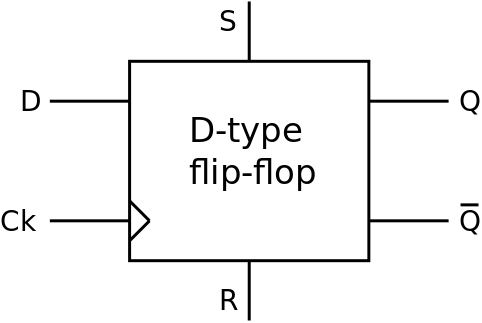The D flip-flop is a two-input flip-flop. The inputs are the data (D) input and a clock (CLK) input. The clock is a timing pulse generated by the equipment to control operations. The D flip-flop is used to store data at a predetermined time and hold it until it is needed.
The D flip-flop has two main inputs:
- D (Data input): This input controls the data to be stored in the flip-flop. The current value of D is transferred to the output (Q) on the rising edge (or falling edge, depending on the type of DFF) of the clock signal.
- CLK (Clock input): The clock signal is used to control the timing of the D flip-flop. The output Q is updated based on the value of D at the specific edge of the clock signal.
The D flip-flop has two outputs:
- Q (Output): Represents the stored data bit. It changes its state based on the input D at the rising (or falling) edge of the clock.
- Q̅ (Complement output): Also known as the "not Q" or "Q-bar" output, it represents the complement of the Q output.




No comments:
Post a Comment